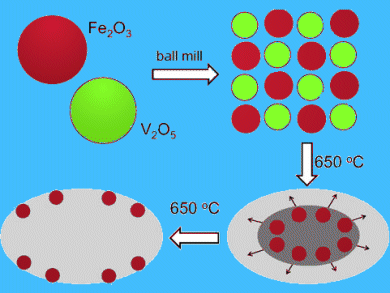The rapid growth of the biodiesel industry has lead to the production of large amounts of glycerol — a major byproduct of biodiesel production. For 2010, the amount of glycerol produced world-wide is estimated at 1.2 million tonnes. Feng Wang and co-workers, Chinese Academy of Sciences, have developed an oxidative dehydration method that converts glycerol into acrylic acid, acrolein, and other useful chemicals.
They use an embedded catalyst, with iron oxide (FeOx) domains on the surface of an iron orthovanadate (FeVO4) phase. The embedded structure stabilizes the nanometer-sized FeOx domains so that their activity is maintained. This allows better catalytic performance than a FeOx catalyst prepared by impregnation or a mixture of FeVO4 and Fe2O3: Acrylic acid could be produced with 14 % yield.
Image: (c) Wiley-VCH
- Catalytic Oxidative Dehydration of Glycerol over a Catalyst with Iron Oxide Domains Embedded in an Iron Orthovanadate Phase
F. Wang, J. Xu, J.-L. Dubois, W. Ueda,
ChemSusChem 2010, 3, 1383–1389.
DOI: 10.1002/cssc.201000245



